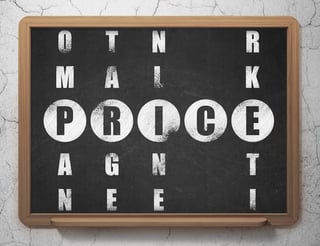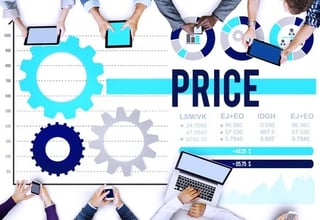Growth Insights for CEOs

Outsider Insights | From Hustle to System: Why More CEOs Are Rebuilding Their Sales Function
Outsider Insights
Across Chief Outsiders, we talk to hundreds of CEOs every month. In this new series, we explore the trends and challenges we’re hearing from these discussions – and what you can do if you’re facing the same issues in your business.
Recent Posts

The 1 Percent Secret: How to Price Your Product for Mid-Market Revenue Success
Fri, Aug 18, 2017 — Psst. I have a secret for you, CEO. How would you like to learn one easy, surefire way to immediately add more than 10 percent in operating profits to your bottom line? Before you declare this another attempt at “fake news,”– let me assure you, this is a legitimate, real, and practical offer. Though it requires very little in terms of effort to achieve – it does require a leap of faith, and resolve of focus, that many CEOs have either been reticent, or reluctant, to make.

Pricing “SaaS”: What’s the Right Price for Your Service?
Sat, Mar 19, 2016 — The Software-as-a-Service (SaaS) model is flourishing, expanding, and boldly going where it’s never gone before—how do you know the right price for your service? The pay-as-you-use model that is widely employed by SaaS offerings has even propagated into areas like manufacturing, where such “value-in-use” strategies are gaining wide acceptance. For companies trying to ensure that this model is as remunerative as it can be, a SaaS offering has to ensure a properly balanced pricing structure. Furthermore, which attributes of our offerings support the highest value needs from our prospects, and how can we look at historical data to inform this pricing model?

Pricing Optimization: How Best To Do It?
Thu, Aug 20, 2015 — In a business environment characterized by recovery from a severe recession, seven years of tepid growth, high unemployment and underemployment, and the explosion of ecommerce (with the lowest price always just a click away), it’s no surprise that optimizing pricing to maximize revenues and/or profits is a critical issue for many businesses. But how does a business know when it can safely raise prices without losing market share? Is market share the right goal, or should it be bottom-line profit? Either way, what pricing optimization information do you need to achieve the chosen goal? If you are asking these questions, you are not alone. Only 15% of all businesses do any kind of systematic pricing study.
Stay up-to-date with the latest from Chief Outsiders

Why You Should Spend More Time Evaluating Your Pricing
Thu, Aug 13, 2015 — In the end, there are three avenues to increasing your profit margins: cost, sales volume and price. In our experience, companies tend to focus on the first two, costs and sales, at the expense of the third, price. There are good reasons for this: any company that is competitive over the long term is very good at managing costs, continually measuring and reducing costs over time, and they have invested in elaborate processes and technologies just to stay in the game. Similarly, companies know their sales histories and are comfortable forecasting sales revenue, with a fair degree of precision, with mathematical models that have withstood the test of time.
.png?width=1500&height=398&name=CO_Corporate%20Logo%202021_4C_HOR_FNL-1%20(1).png)